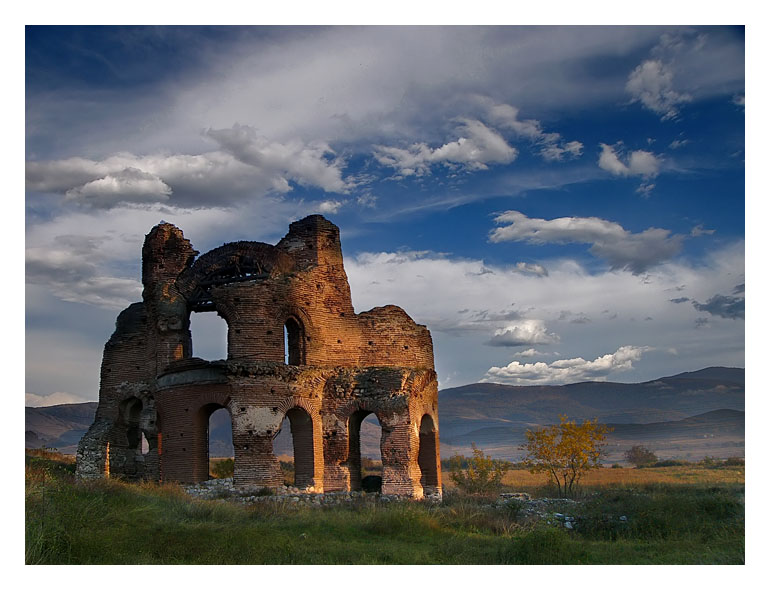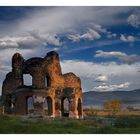The Red Church Near Plovdiv, Bulgaria
Immediately after the Oecumenical Council of Reconciliation summoned in Serdica in 343 AD, the construction of many new cult building started in the whole of Thrace, among which such of worshipping the memory of martyrs who died for the establishment of the Christianity. One of the most remarkable architectural masterpieces of that early period was the so-called Red Church. Today its ruins stand right in the middle of a field, about 15 km southwest of Plovdiv, near the small town of Perushtitza. Some of the church ruins are quite high, so exact reconstruction of what it used to be like could be easily done. The central and highest part of the church is the four-semi-domed hall, whose huge dome is highly erected. The building?s symmetry is cut by the two additional sections to the north and south ? the northern section had a pool covered with pink marble. This where the christening took place, before the newly baptized Christian could walk into the inside section of the church. The very place where the church was erected was not haphazardly chosen ? the Red Church was deliberately and strategically built close to an existing pagan sanctuary, located in the vicinity of such a huge and rich city as Philippopolis, very near the key roads leading from Thrace to the White Sea and from Constantinople to Western Europe. Most probably its place had been connected to the popular at that time Christian cult to the martyrs ? here must have been kept the relics of some eminent martyr who had died fighting for the establishment of Christianity in these lands. Later on, the initial building was reorganized into a church, while its martyral functions were transferred to the large chapel situated south of the big doorway. It is obvious that once it used to be an imposing in its size church, having elaborately decorated walls and beautiful mosaic floors ? an especially beautiful church, estimated today as one of the masterpieces of early-Christian architecture in Europe. What is most impressive to all the specialists in Ancient and Byzantine Art and Architecture is the beauty of the wall paintings. They place the Red Church side by side with the best samples of the early-Christian paining kept in the Ravena Basilicas (6th-7th century), the Sinai Monasteries (6th-7th century), the St.Dimiter (St.James) Church in Thessaloniki (7th-8th century), and the unique St.Sofia in Istanbul (6th century).










Ciprian C Chitu 25/08/2008 13:34
great workKristina Mateva 14/01/2008 14:21
+++Massimo Carolla 29/08/2006 19:10
great story, and a very beautiful image, saluti MassimoWayne Tsipouras 03/05/2006 16:20
Beautiful capture.Much History is within these stones, the stories thay have seen of forgotten worlds still whisper to our souls.
Awesome.
-Wayne
Mohamed Awad 01/05/2006 11:41
NICE SHOTJaime Crystal Attenborough 01/05/2006 10:36
lovely history caption, beautiful colours, love the lightplay alsowell done
jaime :)
Frank Cecconi 01/05/2006 10:19
Great pic, nice lighting, beautiful colours and interesting history! Well done;-)